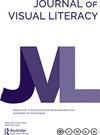The potential of eye tracking for visual literacy research
Q1 Arts and Humanities
引用次数: 4
Abstract
Abstract The multitude of disciplines, perspectives, and practices that inform the study of visual literacy is incredibly valuable, but at the same time it means our research lacks a shared set of methodologies and methods. Unfamiliar research approaches may lead to mistrust of research findings and, even more problematic, to missed opportunities for knowledge development, opportunities that are vital to progress in the field. Eye tracking is one such method that is likely to be outside the traditional disciplinary approaches of most visual literacy scholars, yet it has the potential to be productive for many of the types of questions that the field seeks to answer. Following an introduction to eye-tracking methods, terminology, and data types, the article provides an overview of past eye-tracking research that can inform visual literacy studies. The article then turns to a discussion of visual literacy research that could potentially be addressed by eye-tracking methods.眼动追踪在视觉素养研究中的潜力
视觉素养研究的众多学科、观点和实践是非常有价值的,但同时这也意味着我们的研究缺乏一套共享的方法和方法。不熟悉的研究方法可能导致对研究结果的不信任,甚至更严重的问题是,导致错过知识发展的机会,而这些机会对该领域的进步至关重要。眼动追踪就是这样一种方法,它可能在大多数视觉素养学者的传统学科方法之外,但它有可能对该领域寻求答案的许多类型的问题产生影响。在介绍眼动追踪方法、术语和数据类型之后,本文概述了过去的眼动追踪研究,可以为视觉素养研究提供信息。然后,文章转向视觉素养研究的讨论,这可能会通过眼动追踪方法来解决。
本文章由计算机程序翻译,如有差异,请以英文原文为准。
求助全文
约1分钟内获得全文
求助全文
来源期刊

Journal of Visual Literacy
Arts and Humanities-Visual Arts and Performing Arts
CiteScore
1.30
自引率
0.00%
发文量
12
 求助内容:
求助内容: 应助结果提醒方式:
应助结果提醒方式:


